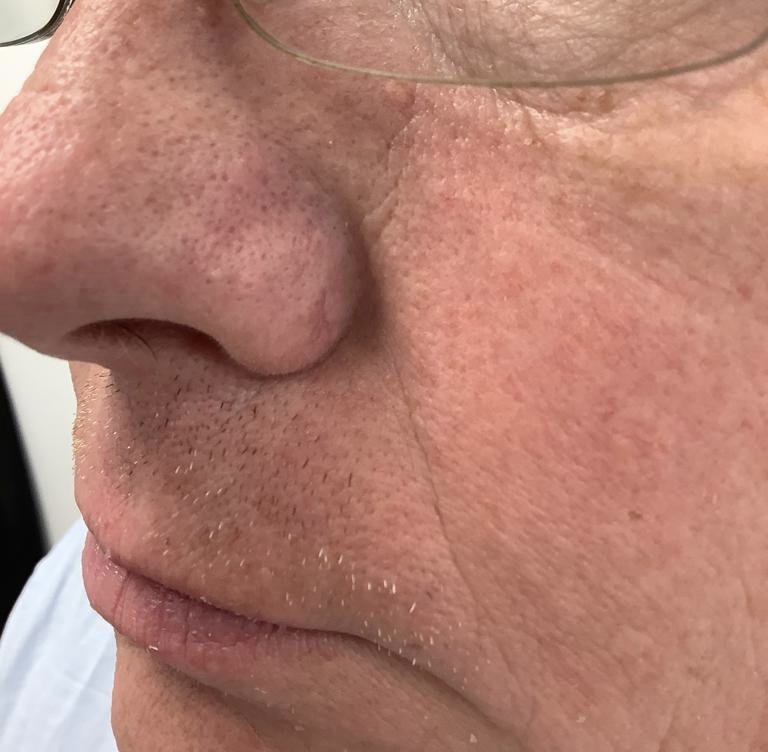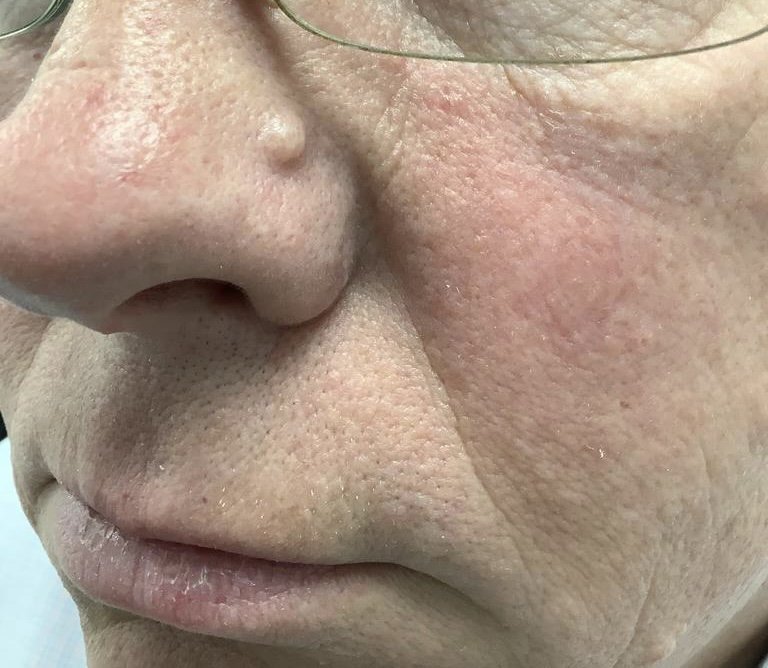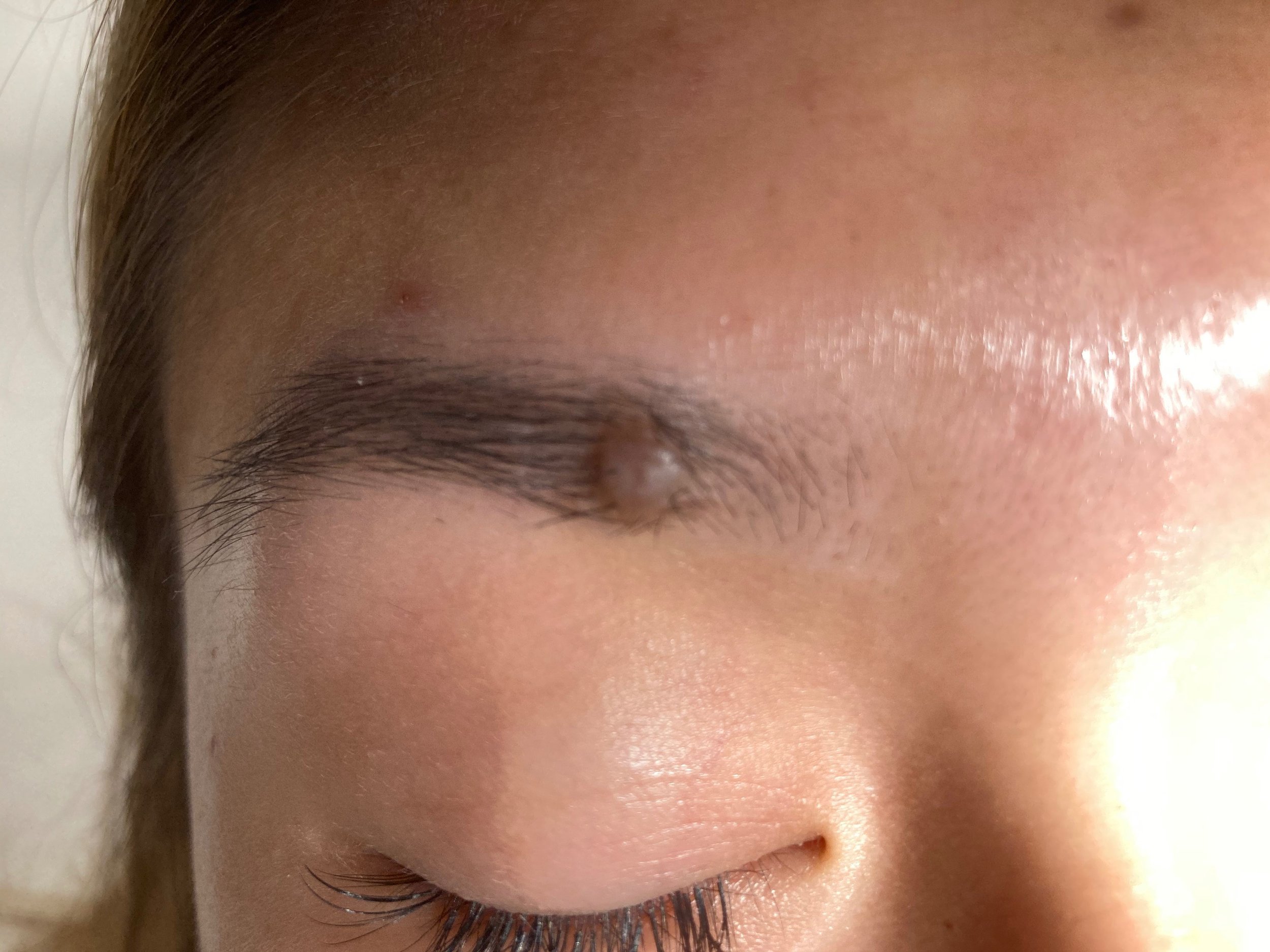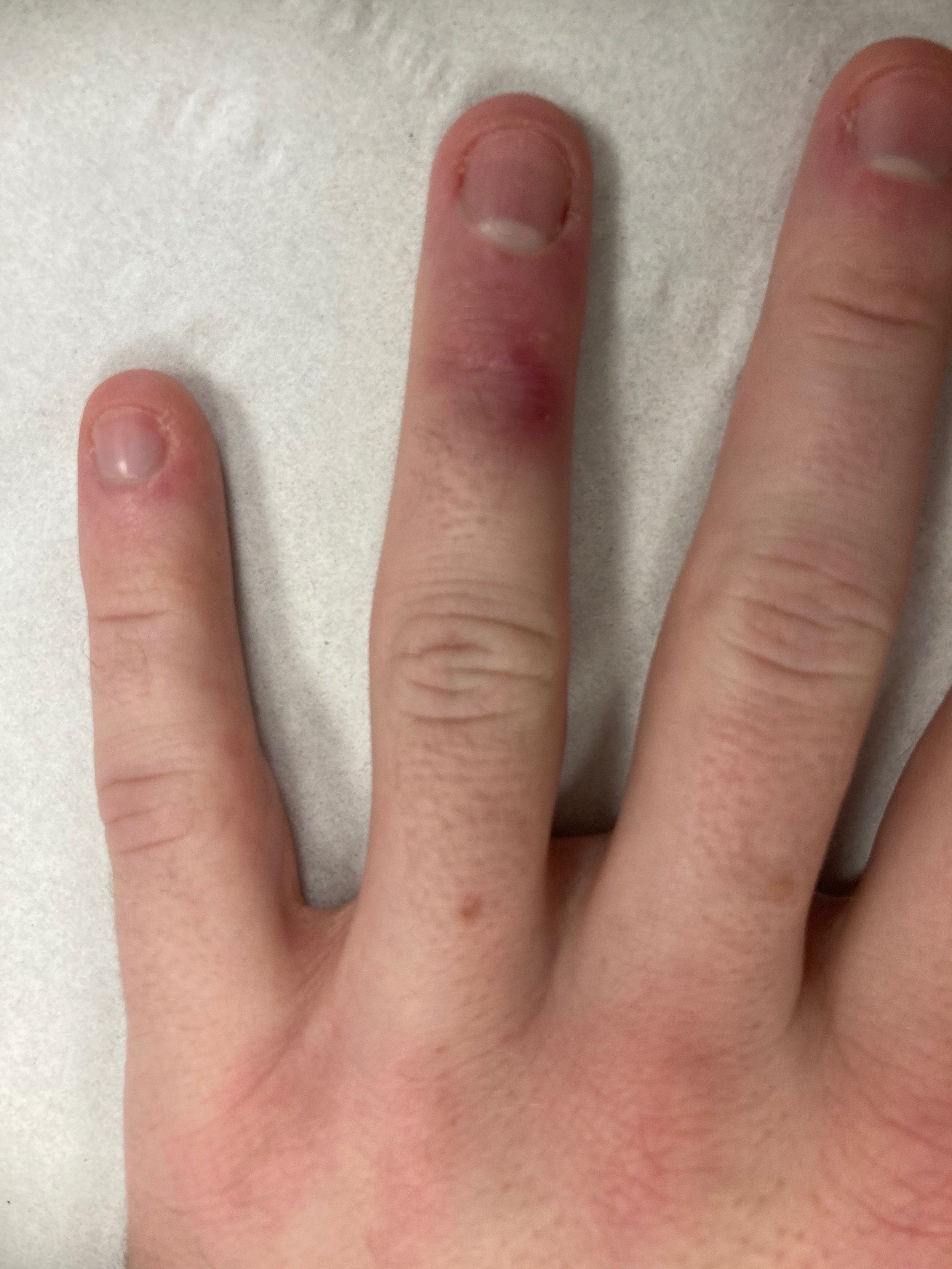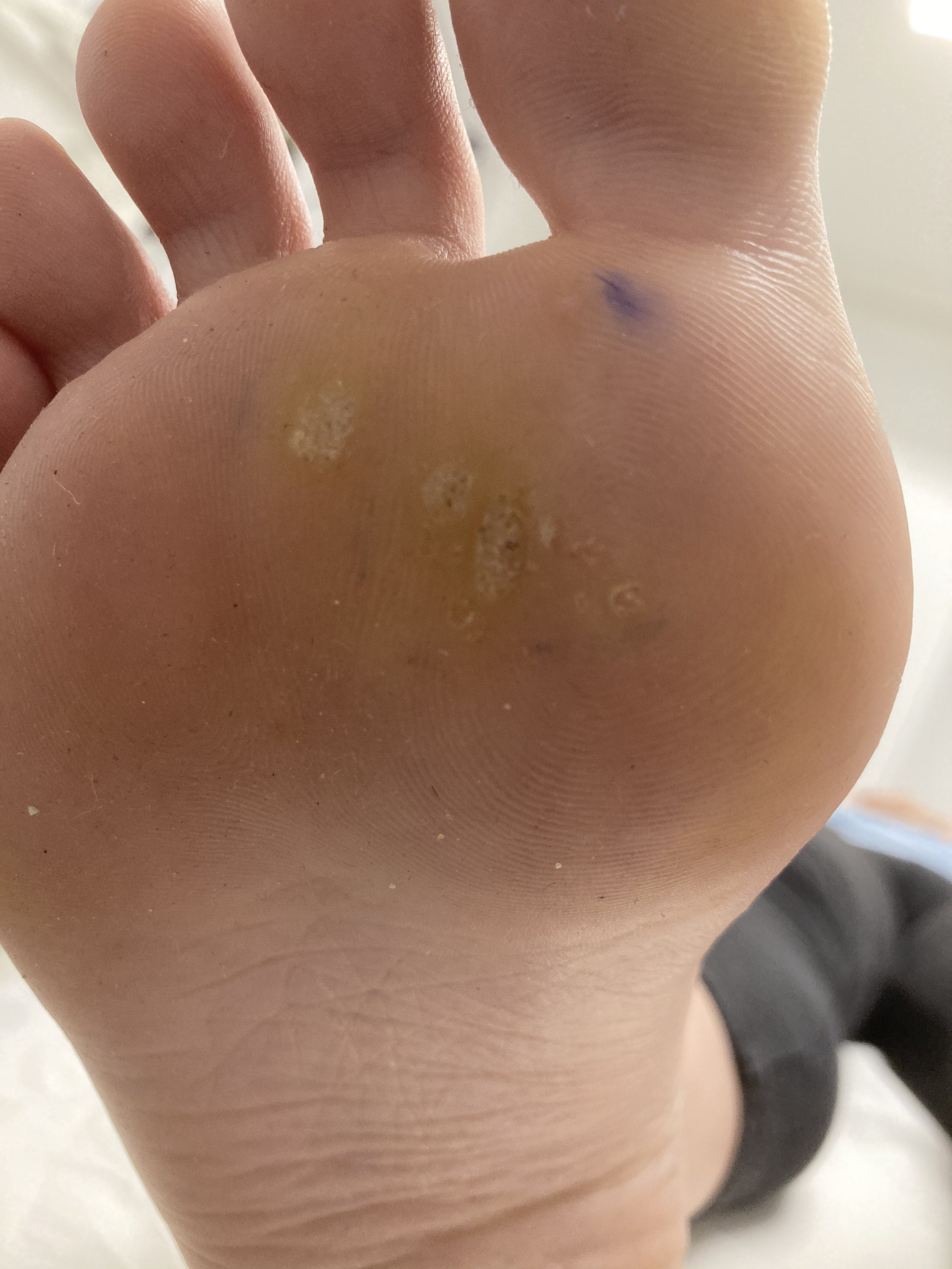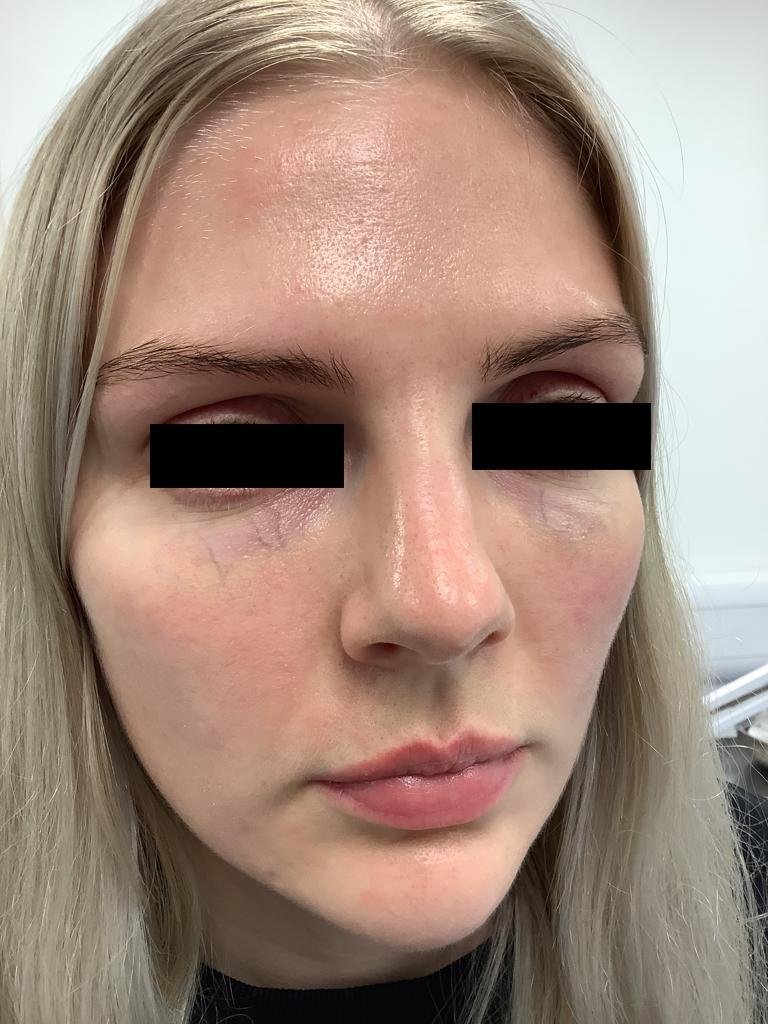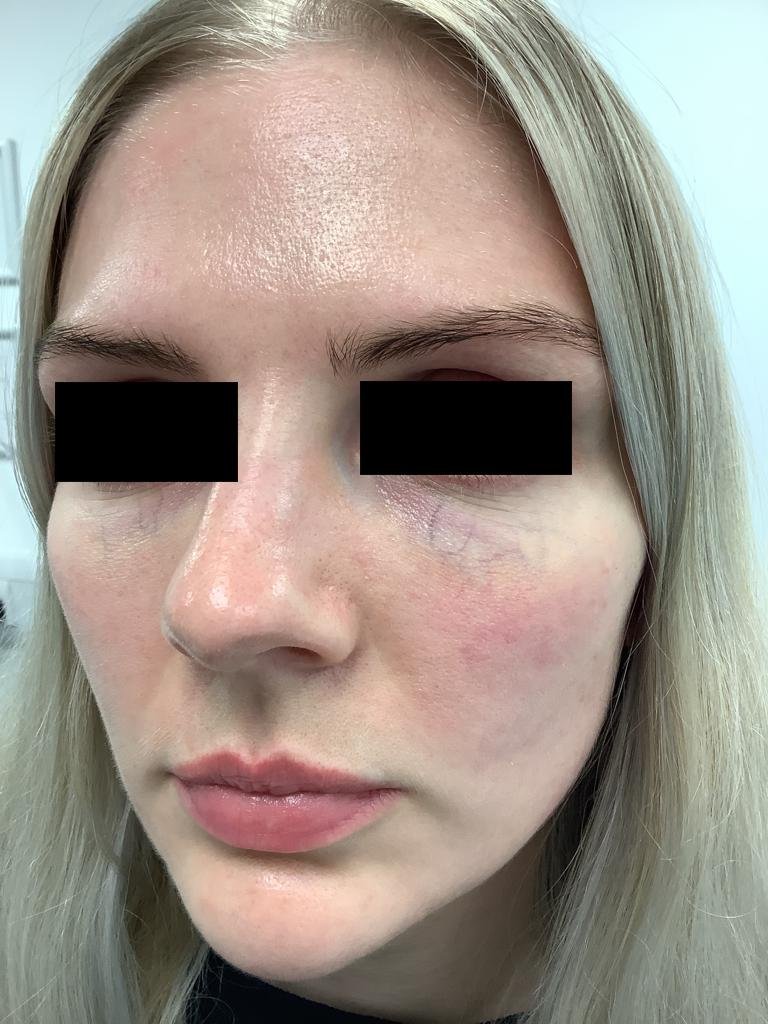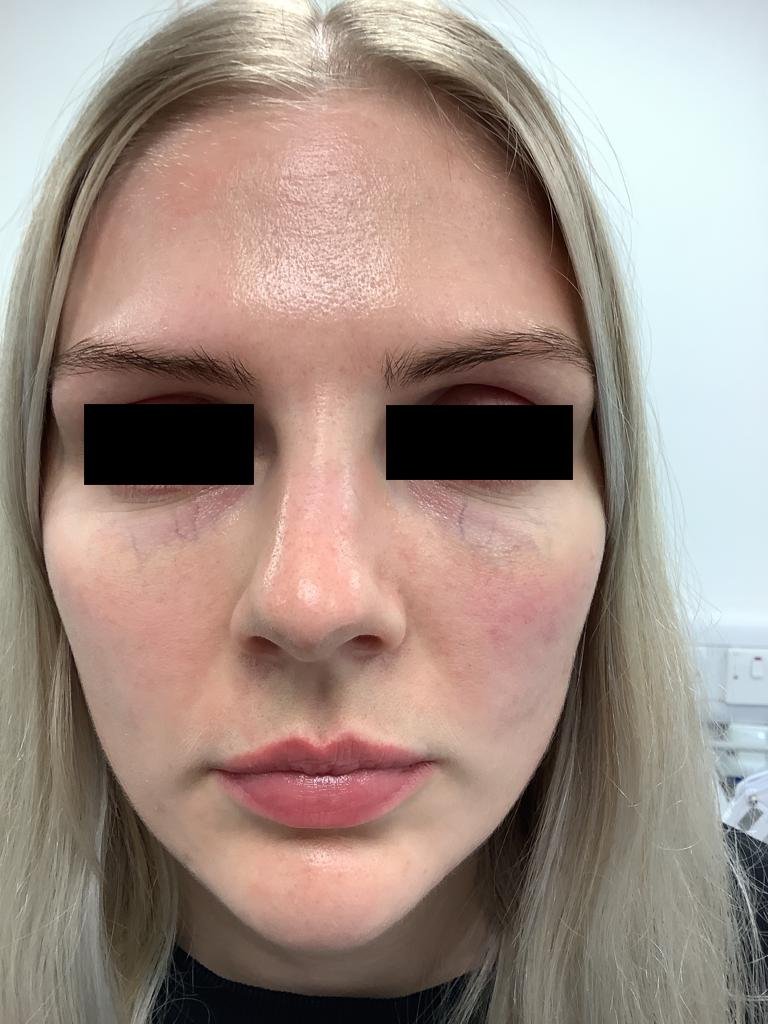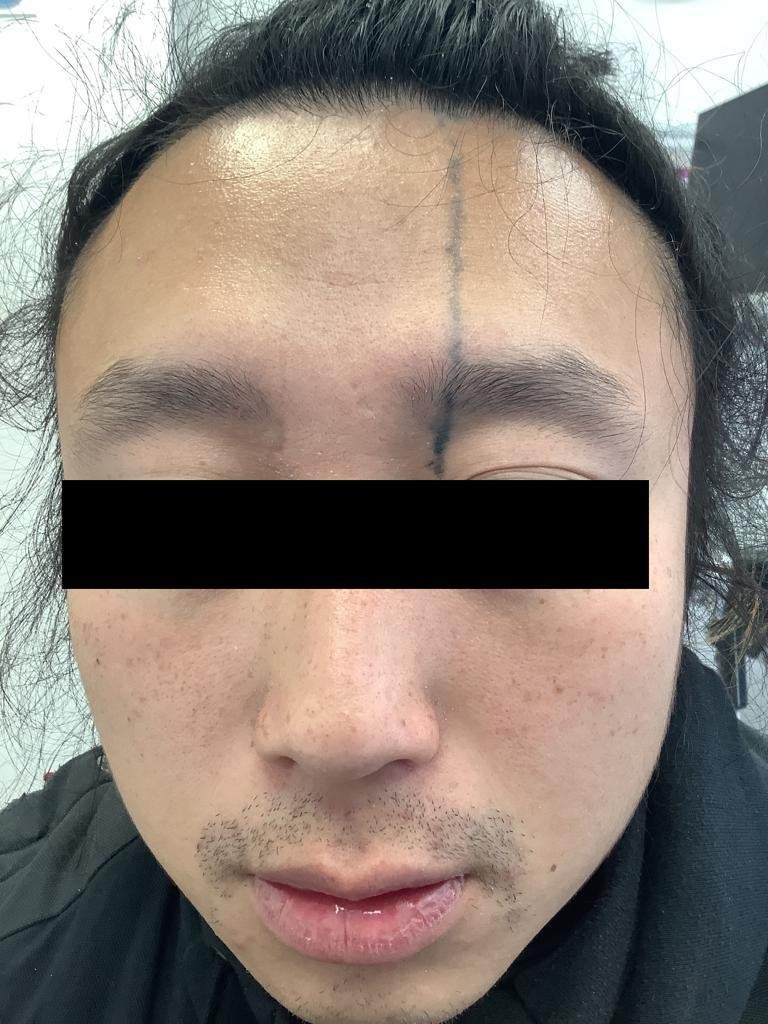Services
Consultation & Assessment
Consultation £230
First Step
The first step is a consultation where Dr Halfhide will personally take a full history and examine the patient's concerns. This typically concludes with a diagnosis and treatment plan, which may need simply a prescription and nothing more. Sometimes more elaborate treatments are helpful.
Available Treatments
Resurfacing for acne scarring and traumatic scars(carbon dioxide, Erbium:YAG and Fraxel lasers)
Wrinkle injections ('Botox', see separate section) excessive sweating (Hyperhydrosis)
Fillers (Juvederm range, Profhilo and Sculptra)
Birth marks, all types and colours ( Pulsed Dye, Nd:YAG and other lasers)
Mole removal/ enhancement (usually carbon dioxide laser recommended)
Rosacea and facial thread veins (Laser)
Sun damaged and prematurely aged skin (brown pigmented 'liver' or age spots, fine lines and thin 'crepe paper' skin - Fraxel, Nd:YAG picosecond laser, fillers)
Acne scar removal (punch biopsy excision or submission)
Hypertrophic and keloid scars (Laser and steroid injections)
Seborrhoeic keratosis removal (carbon dioxide laser typically - this laser's efficiency can handle many in one session)
Leg thread veins (sclerotherapy and laser)
Thread lifting (Silhouette Soft)
Skin tag removal
Wart/ verruca removal (surgery or laser)
Cyst removal (surgical)
Milia removal
Carbon dioxide laser mole reduction
Before 2 months post procedure
Watch the procedure here >>
Before
Immediately after treatment
4.5 months later, hair will grow back fully
Very difficult to treat warts around the nail, present for many years, failed all previous treatments. Laser can remove these warts without scarring or damage to the nail plate
Before
After
These verrucae on the foot treated with a very different surgical laser
Acne Scarring: Advanced Laser resurfacing
Overview
Over the last 30-40 years, there have been major advances in lasers: it is now possible to significantly reduce acne and other facial scars, to remove blemishes, lumps and bumps (e.g. moles, *see separate section on mole removal), frequently with minimal disruption and minimal downtime.
Dr Halfhide has used ablative lasers like Carbon Dioxide and Erbium YAG since 2016. These target mainly the top layers of skin (epidermis) but also affect the lower layers of skin (dermis). They remove the upper layers of skin in a very precisely controlled manner.
The results of non-ablative laser resurfacing like Fraxel Dual are not as impressive as ablative laser resurfacing in scarring nor can they remove lumps and bumps, but the excellent safety profile and rapid recovery post-treatment have made non-ablative lasers like the Fraxel Dual popular. Dr Halfhide has been using Fraxel Dual Laser regularly since 2006, and continues to be impressed with the device and and its effectiveness particularly in rejuvenation (*see separate section on rejuvenation).
Which laser is best for me?
This is best determined in a consultation with the doctor: a) for full assessment of the individual’s concerns and b) to discuss the desired outcomes, as well as pros and cons of each laser.
Those with deeper scars pictured below, or with facial wrinkles and sun-damaged skin, lumps or bumps, would get best results with ablative lasers. Acne scars and facial scars from surgery or trauma may be reduced but very deep scars cannot be completely removed. Many benign unwanted moles or skin growths and scaly patches on the face and elsewhere can be easily removed (see separate section on moles and blemishses).
Those with milder scarring as below, and darker skin types, will be better suited to non-ablative lasers (darker skin types are more at risk of pigmentary change with ablative lasers). Sun block for several months after treatment is important. Also the shorter recovery time of Fraxel Dual of 0-3 days appeals to some though it must be appreciated that non-ablative lasers are not as effective as ablative ones.
Is Pain relief necessary?
Yes it is: for non-ablative Fraxel anaesthetic gel is applied for 1 hour before the procedure; for ablative lasers injection anaesthetic is typically used in addition. One of the attractions of the non-ablative Fraxel Dual is the short down time of 0-3 days though it must be remembered it does not provide as good results as the ablative lasers.
Do I have to take time off work?
Ablative lasers have a down time of 7-10 days; after all crusting of skin has subsided there is often some residual redness (healing with new collagen formation) which can be covered with ordinary over the counter make up. In the initial 7-10 days there will be swelling, redness, exudation and crusting of the treated area. An occlusive healing ointment is important in the initial 7-10 days, it will improve growth of new skin. Dr Halfhide typically treats patients on a Wednesday or a Thursday, patients then take the next day (Friday) off work as well as the following week. Sunscreens are very important in the first months after resurfacing to prevent natural uv light from slowing production of new skin and collagen.
For non-ablative lasers like Fraxel Dual the down time is anything from 0-3 days only. When Dr Halfhide underwent this procedure himself he worked from home the next day, a Friday. He was sufficiently relaxed that for session number 2 (3 sessions is typical) he did not schedule any time off at all. At work the day after session 2, only one of his long standing NHS colleagues seemed to notice anything and said, knowing how careful he is with sun avoidance, ‘Naughty boy, you got sunburnt yesterday’.
How much improvement will I see?
Carbon Dioxide and Erbium YAG ablative lasers give the best achievable results and are rightly considered around the world as the gold standard against which all other acne scarring techniques are judged. Although non-ablative Fraxel Dual does not provide as impressive results its low risk and rapid recovery make it an attractive option for some.
Before
12 months after one laser treatment
Rejuvenation
Photos here
Non-ablative lasers like Fraxel Dual have been used by Dr Halfhide since 2006. Fraxel Dual is capable of targeting the epidermis alone, the dermis alone, or both. Non-ablative lasers provide excellent results in sun damaged skin by reducing mottled pigmentation like sun spots and increasing collagen with tightening, thereby producing a more youthful appearance.
What does non-ablative mean?
Ablative lasers remove a proportion of the top layer of the skin (epidermis). Non-ablative lasers do not; tiny pixels of laser light penetrate the skin without removing a layer entirely. The excellent safety profile and rapid recovery post-treatment have made non-ablative lasers very popular.
With ablative lasers (like Carbon dioxide or Erbium YAG) all wrinkles are reduced, but those caused by the sun, especially those around the eyes and lips respond best. It is never too late - or too early - to treat wrinkles once they are established.
Which is best, face lift or laser?
They are not interchangeable treatments and they meet different objectives. A face lift attends to more advanced sagging of aging skin. Lasers do provide a general ‘lift’ to the face, but not as much lift as a plastic surgical facelift. Unlike plastic surgery, however, lasers are better at reducing wrinkles around the lips and around the eyes, and lasers stimulate new collagen formation giving a younger healthier looking tone and lustre to the skin. As lasers and facelifts result in different outcomes, sometimes both procedures are necessary to achieve the optimal results. Dr Halfhide is not a Plastic Surgeon but he will be pleased to guide patients in a straightforward way, providing a clear pathway forward in a consultation, and explaining the relative benefits of plastic surgery versus lasers in each individual case.
Will I need anaesthetic injection?
For non-ablative laser no injection is required, topical anaesthetic gel is used and applied one hour before the start of the procedure. Injection anaesthetic is required for ablative lasers.
Do I need to take time off work?
For non-ablative lasers like Fraxel Dual the down time is anything from 0-3 days only. When Dr Halfhide underwent this procedure himself he worked from home the next day, a Friday, and noted only a little redness. He was sufficiently relaxed after his first session that for session number 2 (3 sessions is typical) he did not schedule any time off at all. At work the day after session 2, only one of his long standing NHS colleagues seemed to notice anything and said, knowing how careful he is with sun avoidance, ‘Naughty boy, you got sunburnt yesterday’. That was it, no one else commented that day.
Sun protection
This is very important after the procedure and Dr Halfhide will talk to you about it during the consultation.
Rejuvenation: Advanced laser resurfacing
Anti-Ageing injectables
Dr Halfhide has 25 years experience in Botox and Filler treatments, used for full face rejuvenation. Most commonly used for wrinkles in the forehead, between the eyebrows (frown lines) and crow’s feet; additionally botox is helpful for bunny wrinkles of the nose, lipstick (sometimes called smoker’s) lines, marionette lines and down turned corners of mouth (‘twenty past four smile’), gummy smile, bobbly chin, and neck lines. Botox can also be used to treat headaches, grinding teeth/ jaw clenching, slimming of the cheeks, and excessive sweating.
Botulinum Toxin (Botox)
What is Botox?
Botulinum toxin is simply a protein, more usually known as Botox.
Isn’t it a poison?
The short answer is no. For any substance to be poisonous it has to be ingested in sufficient quantities to cause harm. The doses used in cosmetic treatment are incredibly small: if it was laid out on a glass table in front of you it is unlikely you could even see it!
Ingesting 10 times the botulinum toxin dose used in a cosmetic treatment would cause a person no harm whatsoever. By contrast ingesting 10 times your essential daily requirement of water would definitely harm you (fits, kidney failure, coma etc etc). Dose for dose one could argue that Botox is safer than water!
It’s Natural
Strictly and scientifically speaking, Botulinim toxin is natural: it is a protein produced by a bacterium Clostridium botulinum and has been in existence since the dawn of bacteria themselves. Quite unlike the majority of food additives (insecticides, fertilisers, preservatives, flavourings, colourings etc.) that we all consume daily in the food chain, Botulinum toxin is far more scientifically studied and much more thoroughly understood than those food additives; and in the decades of research and clinical practice it is proven to be very safe.
How can we be so sure of its safety?
Therapeutic use of botulinum toxin is not new, it has been used in medicine since the 1970’s. In fact there is hardly a medical discipline from Urology to Ophthalmology to Gastroenterology to Dermatology … that has not been using it for decades. In Neurology it has been used in cerebral palsy patients at doses much, much larger than cosmetic doses, since the 1980’s, with no long term ill-effects.
Dose for dose safer than water, long term safety data at much larger than used cosmetic doses … it is hard to think of a medicine in the entire British National Formulary of prescription medicines that is so effective whilst at the same time also being so safe!
Isn’t the Practitioner important too?
Very much so! Botulinum toxin side-effects are largely down to the individual in front of you who is holding the syringe and not the botulinum toxin itself, so choose your provider carefully.
People find it hard to believe that the use of botulinum toxin is poorly regulated in the UK; it is a prescription medicine and under prescribing legislation the prescriber has a professional duty to carry out a face to face consultation with a patient before prescribing. Sadly the enforcement of this legislation in the UK is weak, almost non-existent, meaning that many patients in the UK receive injections from people who have limited training (such as a one day course!) and have got hold of botulinum toxin from a prescriber who has not conducted a face to face consultation and is thus breaching the Statutory prescribing guidelines of Good Medical Practice. Would you want to have your face injected by someone who obtains botulinum toxin from a practitioner prepared to flout Statutory prescribing guidelines? And after a one day training course?
Prices
Botox consultation complimentary
One area £230
Two areas £300
Three areas £350
Hyperhidrosis (excessive sweating) £450
Bruxism (teeth grinding or Jaw slimming treatment) £300
Platysmal Bands (Neck) £300
After that additional small areas are charged at £50 per area (Bunny lines, chin, gummy smile, marionette, smokers lines)
Forehead and frown lines - before
2 weeks post treatment
Dermal fillers
Photos here
What are dermal fillers?
Dermal fillers are injected just below the skin surface, it is a simple lunch time procedure.
What are they used for?
They are mainly used for the correction of facial lines/ wrinkles, and enhancement or altering certain specific facial features such as the lips or chin.
Marionette lines (oral commissures)
Smile lines (nasolabial lines)
Jaw contouring
Cheek depressions
Lip enhancement
Chin augmentation
non-surgical rhinoplasty
Acne scars and traumatic facial scars (with subcision)
Sometimes they can also help frown lines (glabellar lines), smoker's lines (perioral lines) and crow's feet (periorbital lines)
Before and after pictures here
What does Dr Halfhide use?
Hyaluronan (Juvederm range, most often Voluma, Volux, Volbella, Volite; and Profhilo)
Poly-L-lactic acid (Sculptra)
Dr Halfhide’s fillers all incorporate local anaesthetic which immediately reduces discomfort
Hyaluronan (also known as Hyaluronic acid) is a natural glycosaminoglycan found in all animal species including humans. It is a jelly-like substance that fills the space between collagen and elastin fibres. It is the most effective shin hydrator available being many times more effective than any moisturiser and lasting up to 15 months or more (e.g. Voluma) – unlike a moisturiser which achieves much less and lasts for just minutes or hours.
Over time, through the ageing process, ultraviolet light exposure and to a lesser extent smoking and alcohol, the body's natural store of hyaluronic acid is degraded resulting in disorganised clumps of collagen and excessive elastin.
Hyaluronan is used not just in dermatology, but also in the medical disciplines of rheumatology, ophthalmology, and wound repair.
Am I suitable for Hyaluronan?
Almost all people are suitable. Because hyaluronan is chemically identical to human hyaluronan, allergy to it is very rare. This is why the previously used bovine and avian collagen is much less often used now. Patients required an initial skin test to confirm they were not allergic to it and then waited 4 weeks for treatment. Dr Halfhide has not used collagen since 2002 when the superior hyaluronan products became available (and not requiring a skin test and 4 week wait).
Prices from £450, detailed costs of treatment are provided at the time of consultation after the doctor has assessed your objectives and examined you.
Chin augmentation
Before After Before After
This patient requested particularly more upper lip volume - before
As requested 15 minutes later
Sculptra
Photos here
This product is not strictly speaking a filler rather it stimulates collagen production. It is less used now because of very occasional nodule formation (which occurs less often with hyaluronan). However, Dr Halfhide has a band of patients who have loved it over the last 20+ years and still insist on it! It also has an advantage over hyaluronan: as a collagen stimulator it is very useful for those patients with a lot of sun damage. These patients have lost much collagen and in its place the skin fills out with elastin fibres (medically referred to as Solar Elastosis), making the skin have a ‘crepe paper’ appearance. Since Sculptra is a collagen stimulator such patients do well from replacing the degraded and lost collagen.
What are the side effects?
Bruising, approximately 1:5 procedures but it is not expected to be any larger than a 5 pence piece and is easily covered with make up
Discomfort, though the needle is tiny ( the same size that diabetics use every day)
Rarer side effects
Lumps, nodules, overcorrection, though Dr Halfhide’s treatments are conservative and he is more likely to under-treat than over-treat
Unwanted migration of product
Very rare side effects
blue appearance from too superficial an injection
inflammatory reactions weeks to years after injection
Numbness due to nerve palsy
Vascular injury
Infections: reactivation of herpes virus, bacterial infection
extrusion of implant
Allergic reactions
Preventing of side effects
Choose your practitioner carefully. Patients often blame the product for unwanted effects when in fact it is rarely true that the product is at fault, more often it is the injector. The UK’s regulation of this market is weak, virtually non-existent: don’t become the victim of a poorly skilled practitioner who is unregulated! A doctor’s license to practice is regulated by the General Medical Council UK, Dr Halfhide has held full registration since 1989.
Proper knowledge of facial anatomy, adequate training and supervision are important, especially to avoid the rarer but serious side effects.
Caution is necessary in patients with a bleeding disorder or who are taking aspirin, warfarin, apixaban, ginseng, vitamin E or other anticoagulant agent. Please tell the doctor if you are taking blood thinners.
Prophylactic antivirals, such as oral aciclovir, should be prescribed if there is a history of herpes infection (cold sores).
Use small quantities of light filler in thin skinned areas, such as tear trough and eyelids; patients should be counselled and handled with caution in these areas.
Avoid injection into a blood vessel; the practitioner must have a good training and thorough understanding of the vascular danger areas, he / she should always aspirate prior to injection.
Prices from £450, detailed costs of treatment are provided at the time of consultation after the doctor has assessed your objectives and examined you.
Thread Veins: Laser and Sclerotherapy
Experienced in treating redness of acne rosacea, facial thread veins from sun damage, and all vascular facial lesions.
Dermatology
Dr Halfhide also offers consultations for diagnosis and treatment of all skin conditions in Dermatology, from Acne to rashes and beyond, including lumps & bumps. He is able to manage any skin condition including those excluded from NHS treatment, though he recommends skin cancer work is managed within the NHS.
Birthmarks & Skin blemishes
Everything from birthmarks, port wine stains to darkening skin blemishes we can improve with the use of lasers.

